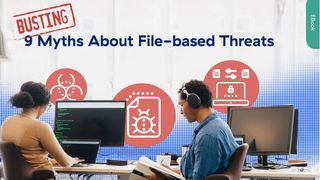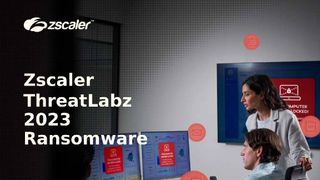Cisco embraces multicloud with HyperFlex 3 update
HyperFlex 3.0 now supports Microsoft Hyper-V, stretch clusters and containers

Cisco has revealed an update to its HyperFlex platform, prepping businesses for a multi-cloud future, with support for Microsoft Hyper-V, stretch clusters and containers.
It's the biggest update Cisco has made to its hyperconverged platform since it launched a few years ago, and it makes running the platform a much better fit for businesses running a hybrid infrastructure.
AppDynamics and Cisco Workload Optimization Manager are both included in the update, offering monitoring and management of hybrid applications and automated analysis and workload placement to help businesses keep on top of their app management.
Although Hyperflex has always supported VMWare's ESXi hypervisor, the HyperFlex 3.0 takes this one step forward, with support for Microsoft Hyper-V, meaning businesses now have a choice between vendors.
Another new addition is a FlexVolume driver, which allows organisations to offer storage for Kubernetes-managed containers. This means cloud-native applications can be developed and deployed on Hyperflex, breaking down the barriers for businesses that have moved away from on-premise completely (or even just for some workloads).
Cisco is also offering enhanced application migration tools in the form of workload profiling and sizing tools within HyperFlex 3.0. This includes new design and deployment guides for mission critical databases, analytics and ERP applications - including Oracle, SQL, SAP, Microsoft Exchange, and Splunk on top of its Virtual Server Infrastructure (VSI) and Virtual Desktop Infrastructure (VDI).
For those using clusters, HyperFlex has extended support to 64 nodes with fully-automated availability nodes for greater resiliency. The latest iteration can also be configured into stretch clusters to span campuses or areas for businesses with multiple locations.
Get the ITPro. daily newsletter
Receive our latest news, industry updates, featured resources and more. Sign up today to receive our FREE report on AI cyber crime & security - newly updated for 2024.

Clare is the founder of Blue Cactus Digital, a digital marketing company that helps ethical and sustainability-focused businesses grow their customer base.
Prior to becoming a marketer, Clare was a journalist, working at a range of mobile device-focused outlets including Know Your Mobile before moving into freelance life.
As a freelance writer, she drew on her expertise in mobility to write features and guides for ITPro, as well as regularly writing news stories on a wide range of topics.




